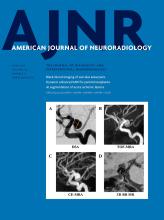We read with great interest the publication “High-Grade Gliomas in Children with Neurofibromatosis Type 1: Literature Review and Illustrative Cases” by Spyris et al.1 As discussed by the authors, high-grade gliomas in children may be associated with neurofibromatosis type 1 (NF-1). However, several other cancer predisposition syndromes, including constitutional mismatch repair deficiency (CMMRD), also increase the risk of childhood high-grade glioma. Most important, not only does the spectrum of CMMRD-associated malignancies overlap that reported for NF-1 but patients with CMMRD frequently also show nonmalignant features of NF-1.2 This phenotypic overlap between NF-1 and CMMRD challenges the clinical diagnosis of NF-1 in a patient with pediatric high-grade glioma and, overall, our current knowledge on associations between NF-1 and rare childhood malignancies.3
Because patients with CMMRD-associated high-grade gliomas may benefit from immunotherapy with anti-programmed cell death protein 1 drugs,4 it is key to explore extensively the underlying genetic disease by molecular genetic diagnosis. Distinction between CMMRD and NF-1 in this setting also has implications for further cancer surveillance of the patient, recurrence risk in siblings, and Lynch syndrome–associated cancer risks in the extended family.
In this respect, the cases presented by Spyris et al1 are illustrative of the diagnostic challenge that may occur in this setting. The article reports 5 patients with a brain tumor who were “diagnosed with NF-1 in accordance with the diagnostic criteria.” Considering that the message of the article is to raise awareness of the occurrence of high-grade glioma in children with NF-1, we would be very interested in a description of the phenotype and family history of these children and what NF-1 criteria were used to state the clinical diagnosis of NF-1. It would also be of interest to know whether focal abnormal signal intensities (FASIs), a very common finding in children with NF-1, were present. None of the reported patients had visible FASIs on the MRIs presented in the figures. Three patients (patients 1, 2, and 4) had malignant tumors molecularly consistent with diffuse midline H3K27M-mutated gliomas, which have not been described in children with NF-1.5,6 “Skin spots,” presumably café-au-lait macules, were explicitly reported only for patient 4. Even the tumors most typically associated with NF-1 (ie, optic pathway glioma and pilocytic astrocytoma) as diagnosed in patients 3 and 5 have been described in CMMRD.3 Taken together, the diagnosis of NF-1 is questionable in at least some of the patients. Considering the impact of the diagnosis of the underlying genetic disease on the treatment of affected patients, it would be of major importance to genetically confirm the diagnosis of NF-1 in these 5 patients.
To conclude, we strongly recommend that in all children with high-grade gliomas and a phenotype reminiscent of NF-1, this diagnosis should be confirmed as the underlying disease by identification of a clearly pathogenic germline NF1 mutation. In the absence of this confirmation, CMMRD should be excluded by mutation analysis of the MMR genes and/or by immunohistochemistry showing the expression of all 4 MMR proteins in the tumor or by appropriate molecular and functional assays.3 A correct diagnosis in these children will be important to adapt the therapeutic strategy, surveillance, and genetic counseling as stated in recent consensus papers. A definite genetic diagnosis of NF-1 and exclusion of CMMRD in future patients are necessary to substantiate the reported association of NF-1 with childhood high-grade gliomas because this is currently largely based on patients diagnosed only on clinical criteria (for review see Wimmer et al3) and, therefore, challenged by our current knowledge of the phenotypic overlap between CMMRD and NF-1.
Footnotes
Disclosures: Eric Legius—UNRELATED: Grants/Grants Pending: University of Leuven, Comments: I applied for a new grant at the University of Leuven for studying behavior in a genetic mouse model. I received a grant from the University of Leuven for studying autistic behavior in a mouse model.* *Money paid to the institution.
REFERENCES
- © 2019 by American Journal of Neuroradiology












